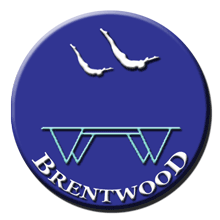 Basic
shapes
Basic
shapes
Tuck Jump
This shape skill should be performed as much like a straight jump as it is possible to do until you reach near TOP. This means ‘arms high’ first and not knees up first. Nearing the ‘TOP’ you start to bring the knees towards the chest and the hands towards the knees, by the TOP the knees should be as close to the chest as you can get them and your shins parallel to your back; hands should touch just below the front of the knees. As you come out of the tuck on the way down arms should first of all come to the side (difficult) and then start to rise again before ‘first contact’.
Straddle
 This
shape skill should be performed as much like a straight jump as it is possible
to do until you reach near TOP. This means ‘arms high’ first and not legs up
first.
This
shape skill should be performed as much like a straight jump as it is possible
to do until you reach near TOP. This means ‘arms high’ first and not legs up
first.
You then reach forwards with your arms from your hips (the hinge in the drawing) and slightly to the side (arms about 90º apart).
As long as you reached up first your legs will come up by themselves because of Newton’s 3rd Law that says for every action there is an equal and opposite reaction.
As you come out of the straddle on the way down, your arms should track your legs back into a straight line
Pike Jump
 This,
the third of the shape skills we have practiced, shares much with the straddle
as you would expect. It is performed as much like a straight jump as it is
possible to do until you reach near TOP. This means ‘arms high’ first and not
legs or feet up first.
This,
the third of the shape skills we have practiced, shares much with the straddle
as you would expect. It is performed as much like a straight jump as it is
possible to do until you reach near TOP. This means ‘arms high’ first and not
legs or feet up first.
Just before TOP you reach forwards with your arms from your hips (the hinge in the drawing) but this time directly forwards with both hands.
As long as you reached up first your legs will now come up by themselves because of Newton’s 3rd Law that says for every action there is an equal and opposite reaction. If you are very flexible you will be able to touch your toes (but still keep them pointed) – it is more important that your legs are straight though than that you touch your toes so just touch your shins if that is all you can reach.
As you come out of the pike on the way down arms should first of all come to the side (difficult) and then start to rise again before ‘first contact’.
 ®
®









